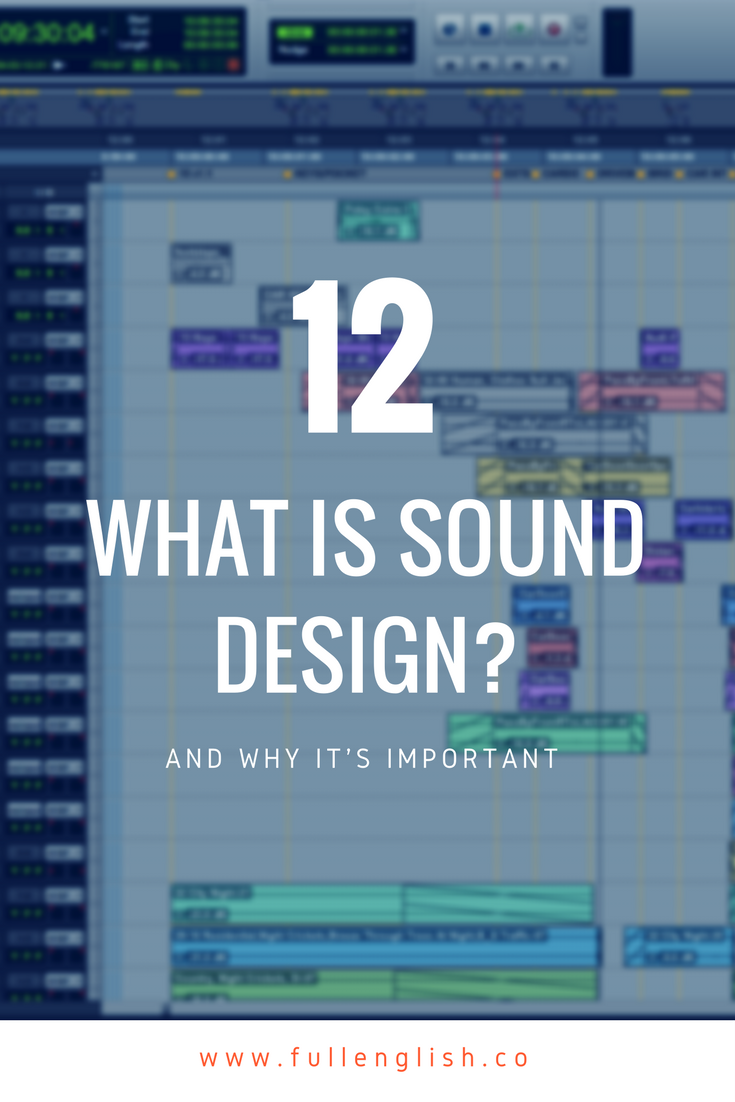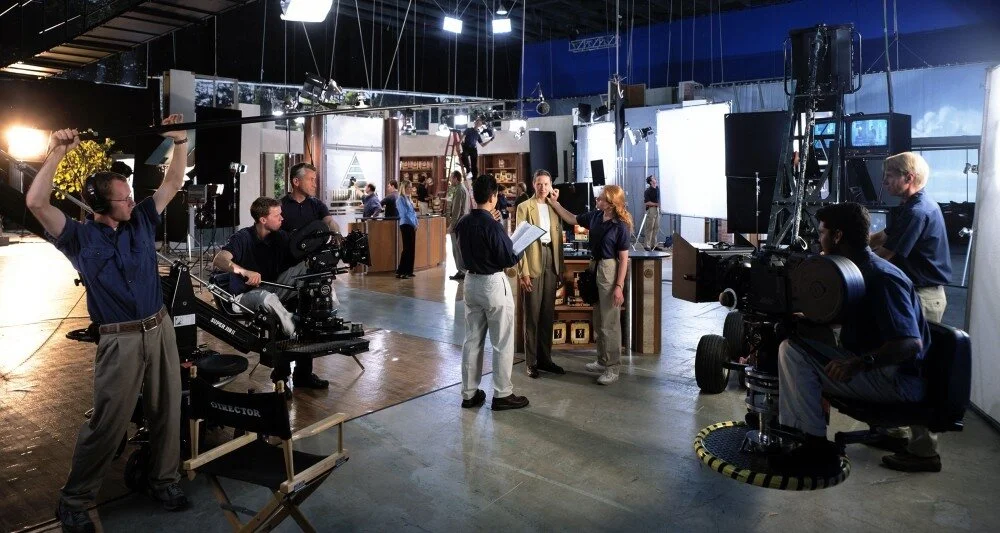WHAT IS SOUND DESIGN?
For this month’s post on The Pub I thought I’d bring it back to basics and explain exactly what it is that I do. A lot of friends, family and first-time acquaintances assume I do ‘something in the music industry’. While there is music in the work I do, I rarely work anywhere near the music industry! This article will discuss what sound design is, the tools and processes involved and how sound designers contribute to the final stages of content creation.
THE PRODUCTION PROCESS
To fully explain what I do and for anyone to understand it well, I should briefly outline the entire process of any production. That YouTube ad that you just can’t wait to skip past has had months of planning, days of shooting and editing, and hours of color grading and sound design. Not to mention the personnel involved from creative directors, to crew, to vendors and freelancers. Most content you see wasn’t cheap, quick, or easy to create.
PRE PRODUCTION
I’m going to use a commercial as an example because I mostly deal with that type of content at Full English. Firstly there’s the conception of the content. A brand needs to sell a product or service, they generally seek out third party agencies to create something for a specific campaign. They may ask several advertising, creative and/or production agencies to pitch ideas to them for their new product/service for this campaign. This pitch will come back to the brand in the form of a ‘deck’ or ‘treatment’. It could be a PowerPoint, a short video demo or even just a PDF with a rough storyline and placeholder images etc. Once the brand chooses a concept from an agency they like, the pre-production stage will begin.
There’ll be a budget the brand will give for the campaign and it’s up to the agency to create the content for that amount. This is pre-production. A producer’s role is to allocate the budget to the personnel and vendors required to create the content. Depending on the budget this includes a production crew, location costs, catering, talent (actors, directors, etc.), music licensing, editors, color grading, sound design, voice over recording, mixing...and a million other things in between.
PRODUCTION
Once the budget has been allocated, production can start. This is the part that most people are aware of...the ‘movie set’ part. A thousand people running around, makeup artists, art department building things, actors throwing tantrums, lighting rigs and so on. Inevitably this nearly always goes over schedule and over budget which, unfortunately for the post-production team, means the post budget allocation gets eaten up by the production costs.
POST PRODUCTION
This brings me to the final stage of a production...post production. This is where all the footage that was captured is edited together, it gets colored (or graded) and audio is added. Which, is where I come in, the sound designer. Myself and the colorist are pretty much the very last people in the entire chain before the content goes to air. I usually work with the advertising agency (who brings all the various vendors and personnel together) or production/creative company directly. Once a final edit of the video is made, I get sent audio files that correspond or sync to the visual. Usually if there is dialogue and music this is placed on the video editor's software timeline (Avid, Final Cut or Premiere usually) which translates to my audio software (Pro Tools) via an OMF or AAF file. There may be a few sound effects in there when I receive it but usually just as place holders to let me know that they want a specific sound effect at that point. This is now my time to shine.
Pro Tools Session after sound design has been added.
DESIGNING AUDIO
This may genuinely come as a shock to some people but most audio in any film or content is added in post-production. This includes music, atmosphere, the sound of clothes rustling, cups being put on tables, even dialogue a lot of the time. Often the dialogue that was recorded on set wasn’t good enough or perhaps the vocal performance wasn’t quite right but visually it was. This process is known as ADR (Automatic Dialogue Replacement). All these sonic elements come together in the post production audio studio.
For any given scene I’ll usually start by cleaning up any dialogue (if any) that was recorded on set, this often takes me the longest amount of time if the recording environment wasn’t quiet or acoustically treated. More often than not it sounds pretty terrible when I receive it! I’ll then mute the edited dialogue and start designing the environment followed by the spot sound effects (known as Foley). The content establishes what kind of sound design is required. I tend to break this is two major categories; creative and real.
CREATIVE SOUND DESIGN
When I say ‘creative’ I’m talking about sounds that don’t exist necessarily in the human world. The Transformers movies are a great example of creative sound design. The machines are aliens that have un-human behavior because they transform from human built machines into somewhat organic beings. How do you design that sonically? Well, in this example it’s a combination of hundreds of smaller sounds that create the distinctive sound of a Transformer changing from a vehicle into each character. These smaller sounds may be real recorded sounds of pots, metal bins, cutlery, anything the sound designer came up with. Those sounds are then manipulated in the sound design and mix stages. There will likely be synthesized sounds in there too meaning they were digitally created by oscillators, filters, and lots of other digital tools. The creativity for a sound designer comes with being able to hear and recognize any normal day-to-day sound and manipulate it in a way that creates a whole new meaning to the sound.
In the project I worked on below I layered lots of different drones and pulsing synths to create an alien ‘atmosphere’ for three different worlds that transition into each other. I then added layers of underwater recordings of motorboats to give an organic yet mechanical feel. On top of dozens of other sounds I added, each sound was treated and meticulously placed so that it created the right overall vibe for the piece.
An example of 'creative' sound design.
REAL SOUND DESIGN
The second major category is ‘real’ sound design. This is sonically creating a scene that exists in the human world. The majority of what I create is ‘real’ but that doesn’t make it any easier to design. Even in a simple scene where people are walking around a kitchen for example, every sound is added afterwards. The footsteps, the room tone, the sound of the fridge, a cup being placed on a table, the clothes rustling, traffic through the window, doors opening...the list goes on. The process of recording and mixing these sounds after the fact is known as Foley. Next time you’re in any environment on your own, take a minute to really listen to what is happening sonically. Close your eyes and listen for anything and everything. That’s the environment I have to build for every single scene in any content I work on.
An example of 'real' sound design.
On top of that, each sound needs to then be treated so that it sounds like it should be in that room or environment. Footsteps in a kitchen will sound echoey yet if they were on carpet in a bedroom they would sound muffled and soft. This is the acoustic environment. Now take a minute to listen to the acoustics of a room, clap your hands in the bathroom then clap them in the living room. You’ll notice there is more echo in the bathroom than the living room. All of these sounds would stand out of place if they weren’t mixed and sonically placed correctly yet the scene would sound odd if they weren’t there.
Once the sound design is complete I will add the dialogue back in and make sure that sits right with the environment I created. The final stage is to bring any music and voiceover in that is to be used. I’ll appropriately dip the music under any dialogue and voice over so that there is a fine balance between the sound effect, music, voice over and dialogue elements. This is known as mixing...that’s for another blog post though!
CONCLUSION
In summary, what I do is create sonic environments to enhance and elevate the visual counterpart to the projects I work on. While content often gets released without care taken on the post-production audio, you will tell the difference between spots that have had it designed professionally and the ones that haven't.
If you need to add a professional sonic touch to your content, drop us an email or give us a call.



